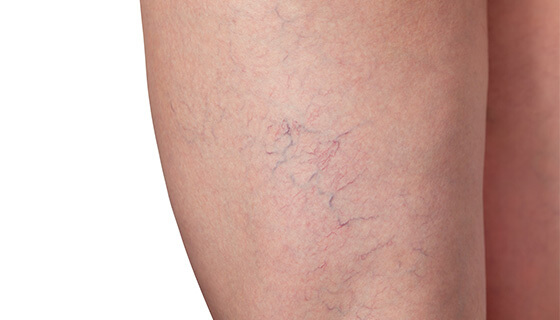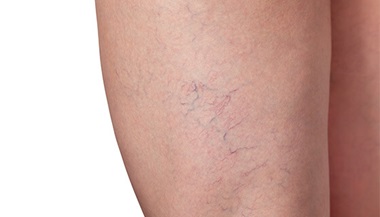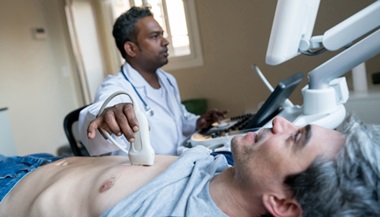Repair of an Ascending Aortic Aneurysm
What is surgical repair of an ascending aortic aneurysm?
The aorta is the main blood vessel that carries oxygenated blood away from your heart and to your body. It's shaped like a walking cane with a curved handle. An ascending aortic aneurysm is an abnormal bulging and weakening in your aorta at the upward part of the arch, which is the part closest to the heart.
If an aortic aneurysm ruptures, it can cause life-threatening bleeding. An aneurysm at risk for rupture needs surgical repair.
Why might I need ascending aortic aneurysm repair?
If an aortic aneurysm is large or growing, it needs surgical repair as soon as possible. In some cases, you may be able to have surgery later.
What are the risks of ascending aortic aneurysm repair?
An aortic aneurysm repair is major surgery that needs general anesthesia. This has brain and heart risks. Major surgery also carries a risk for blood clots in the large veins of your legs during or after surgery. These clots can break free and travel to your lungs. This condition is called a pulmonary embolism. Other risks of aortic aneurysm repair include:
-
Bleeding
-
Infection
-
Swelling
-
Heart problems
-
Stroke
-
Lung infection
-
Respiratory failure
-
Kidney failure
-
Irregular heart rhythms
You may have other risks, based on your specific medical condition. Be sure to talk with your healthcare provider about any concerns you have before this surgery.
How do I get ready for surgical repair of ascending aortic aneurysm?
Recommendations for getting ready for surgery include:
-
Your healthcare provider will explain the procedure and ask if you have any questions.
-
You will be asked to sign a surgical consent form that gives the surgeon permission to do the procedure. Read the form carefully and ask questions if something isn't clear. You will also be given an anesthesia consent form. This gives permission for the anesthesia to be given.
-
Your surgical team will do a complete medical evaluation. This may include a thorough medical history and physical exam, special X-rays, CT scans, blood tests, and procedures to check the health of your lungs and heart. Your healthcare provider may also do an echocardiogram of your heart.
-
If you are pregnant or think you might be, tell your healthcare provider.
-
Tell your healthcare provider if you are sensitive to or are allergic to any medicines, latex, iodine, tape, contrast dyes, and anesthetic medicines (local or general).
Ask your healthcare provider to tell you what you should do before your procedure. Below is a list of common steps that you may be asked to do.
-
Tell your healthcare provider about any medicines you are taking. This includes any blood thinners, herbal medicines, vitamins, supplements, and any prescription or over-the-counter medicines. You may be told to stop taking certain medicines before your surgery.
-
If you still smoke, ask your healthcare provider how soon before surgery you need to stop. Smoking increases your risk for blood clots and breathing problems.
-
Stop eating and drinking before surgery, usually after midnight on the night before surgery. Ask if you should take your medicines on the day of surgery.
What happens during a surgical repair of an ascending aortic aneurysm?
The surgery may take 5 hours or longer. You may need several surgical repairs over your lifetime. This depends on the health of the aortic valve and heart arteries.
-
You will have general anesthesia to make you comfortable and sleep through the surgery.
-
Your surgeon will make a cut in the front of your chest and down through your chest wall, to reach your heart and aorta.
-
During the surgery, a device called a heart-lung machine may be used. It will do the work of your heart and lungs to continue blood circulation and oxygen flow. A cold solution will stop your heart so the surgeons can work on a still heart.
-
Your surgeon will remove the bulging weak area and sew an artificial substitute (graft) into place.
-
If the aortic valve is not healthy, your surgeon may fix it or replace it with an artificial valve.
-
After your surgeon does all of the repairs, normal blood flow through your heart and your aorta will resume. Your surgeon will then close the incision in your chest. You may have temporary pacemaker wires coming from the skin as well as drainage tubes to drain blood.
-
You will be taken to the postanesthesia care unit (PACU) or ICU to be closely monitored afterward.
Talk with your healthcare provider about what you will experience during your procedure.
What happens after ascending aortic aneurysm repair?
You may need to stay in the hospital for up to 10 days or so after surgery. For the first few days, you will be in the intensive care unit (ICU). Tubes will give you nourishment, help you breathe, and drain fluids from your body. As you recover, your healthcare provider will gradually remove the tubes. During this time, the medical staff will help you care for your incision and start walking. Your healthcare provider will give you medicine to control pain and nausea.
Once you are well enough to go home, you’ll need to follow instructions for medicines, pain control, diet, activity, and wound care. Be sure to keep all your follow-up appointments and take your medicines as prescribed.
Your healthcare provider may give you other instructions about what you should do after your procedure. Here is a typical list:
-
Don't do any heavy lifting until otherwise instructed.
-
Wait to begin driving until your surgeon tells you it is OK. Don't drive if you take certain pain medicines that can make you drowsy. Arrange to have someone give you a ride home from the hospital on the day of discharge.
-
Gradually resume normal activities (this may take a few weeks) as directed by your healthcare provider.
-
Ask your healthcare provider when you can resume bathing, driving, working, and sexual activity.
-
When your healthcare provider approves, walk regularly for exercise. Consider 30 minutes, 5 times a week, or as advised.
-
Watch your wounds for any swelling, redness, bleeding, or fluid leaking.
-
Get medical care right away for any increasing pain, fever, chest pain, shortness of breath, increased swelling, or rapid and irregular heart rhythms.
-
Eat a heart-healthy diet and maintain a healthy weight. Don't eat foods that are high in salt and fat.
-
Keep your blood pressure under control. High blood pressure puts stress on the incision sites and on the heart.
-
Don't smoke or use tobacco products.
-
Know who to call with questions and concerns. Is there a different number to call after office hours or on weekends and holidays?
Next steps
Before you agree to the test or procedure, make sure you know:
-
The name of the test or procedure
-
The reason you are having the test or procedure
-
What results to expect and what they mean
-
The risks and benefits of the test or procedure
-
What the possible side effects or complications are
-
When and where you are to have the test or procedure
-
Who will do the test or procedure and what that person’s qualifications are
-
What would happen if you did not have the test or procedure
-
Any alternative tests or procedures to think about
-
When and how you will get the results
-
Who to call after the test or procedure if you have questions or problems
-
How much you will have to pay for the test or procedure





